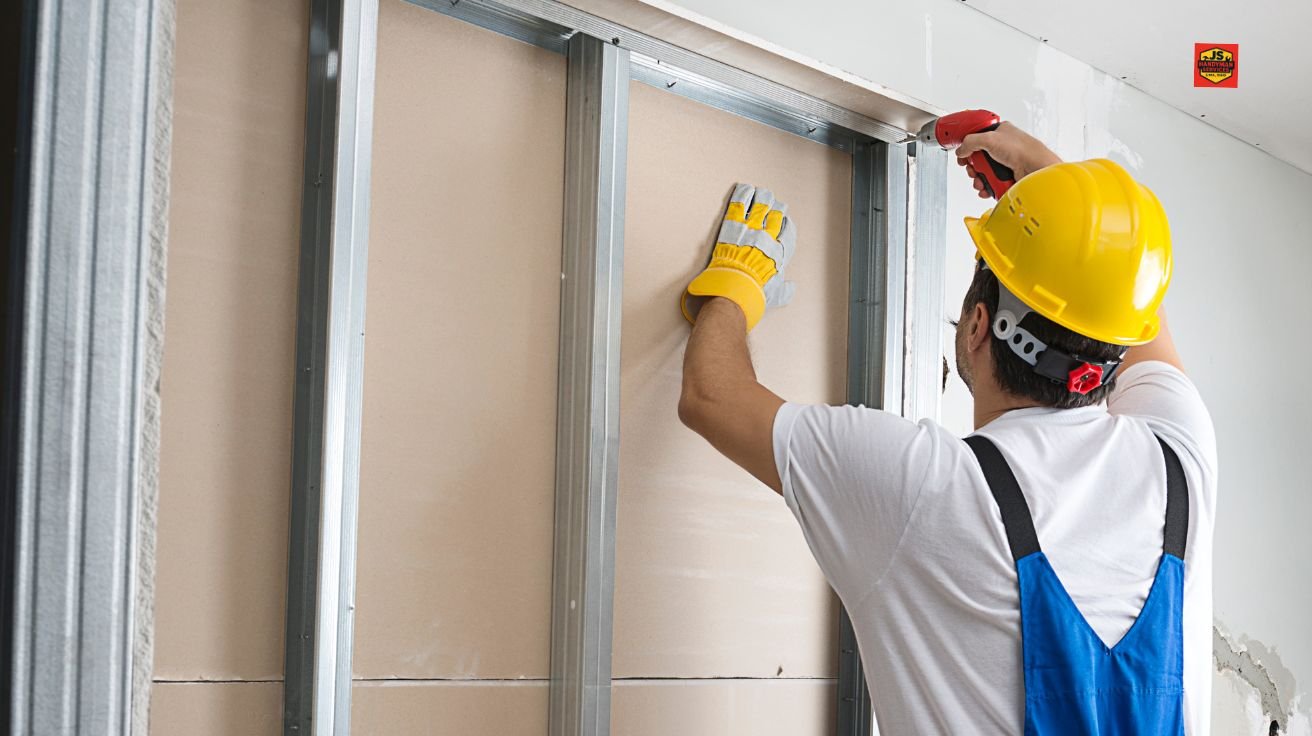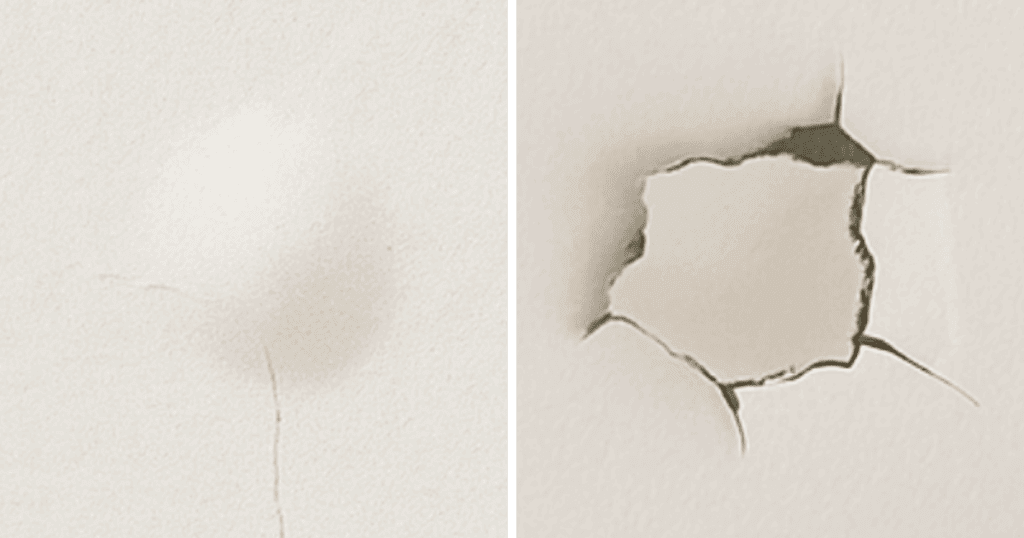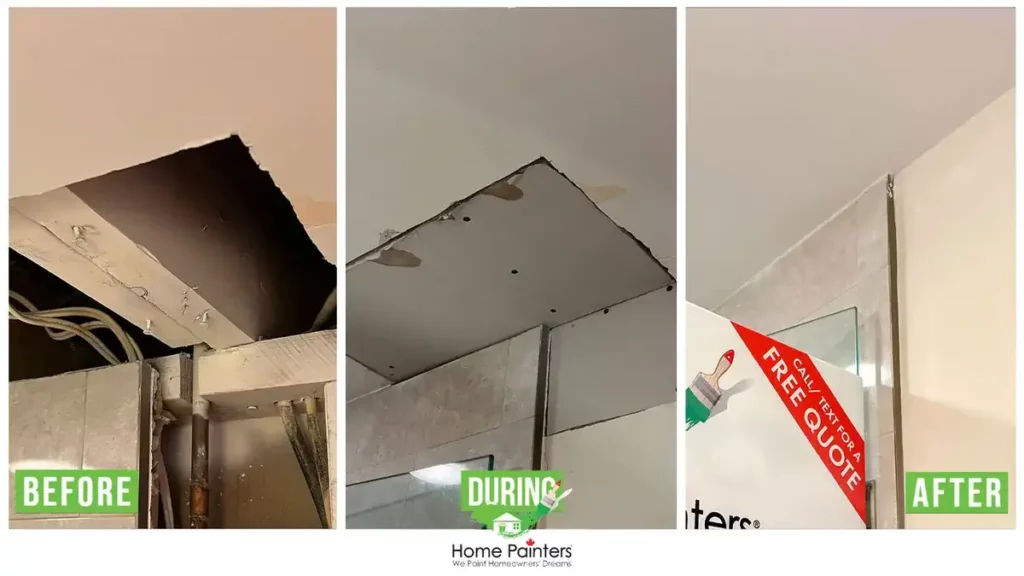Discover the Finest Practices for Effective Drywall Fixing and Installment
The art of drywall repair service and installment requires a blend of skill and precision. Grasping the crucial devices is essential for achieving a seamless finish. Comprehending the detailed process can make a considerable difference in the final outcome. Proper strategies for mudding and taping are likewise vital. What stays is the expertise of upkeep that assures long life. These components with each other produce a refined end result worth checking out additionally.

Essential Devices for Drywall Repair and Setup
When undertaking drywall repair work and installment, having the right tools can substantially enhance the effectiveness and top quality of the job. An utility blade is vital for reducing drywall sheets exactly, while a drywall saw can aid in making extra complex cuts. Taping blades, offered in different dimensions, are important for using joint compound efficiently and evenly. A drywall sander, preferably with a dirt collection function, helps attain a refined coating, decreasing the need for substantial cleaning.
Furthermore, a gauging tape warranties precise measurements, and a degree guarantees that setups are straight and plumb. Safety and security gear, including dirt masks and goggles, must not be neglected to secure against debris and dirt. Lastly, a stud finder help in locating mounting members, ensuring secure setup. By gearing up oneself with these crucial tools, the repair and installation process ends up being much more workable and leads to a professional-quality result.

Step-by-Step Guide to Patching Holes
Patching openings in drywall needs a systematic approach to guarantee a smooth repair service. First, the location around the hole must be cleaned up and any loosened debris got rid of. For little openings, a putty blade can be used to use a light-weight spackle, pressing it into the opening and smoothing the surface. After it dries out, sanding is essential to develop a level finish. For bigger holes, a spot of drywall might be required. This involves reducing a piece of drywall slightly bigger than the hole, securing it to the wall surface with screws, and utilizing joint substance to cover the seams. As soon as the compound dries out, it should be fined sand smooth. Finally, topping the patched area before paint will assure an even surface. Complying with these actions will certainly result in a professional-looking repair service that mixes perfectly with the bordering wall surface.
Techniques for Seamless Drywall Installment
Achieving smooth drywall setup needs careful preparation and execution. It is vital to reduce and gauge drywall sheets accurately to lessen spaces. Making use of an energy knife, installers ought to score the board before snapping it along the cut line, making certain clean sides. Effectively aligning the sheets is crucial; beginning from the leading and working down assists preserve harmony.
Attaching drywall to the studs calls for regular spacing, typically every 16 inches, using screws rather than nails for better hold. This method decreases the danger of pops in time. Additionally, staggering the seams in between sheets boosts architectural honesty and lowers the presence of joints.
Ultimately, utilizing the ideal thickness of drywall for particular areas-- such as moisture-resistant enters bathrooms-- more adds to a perfect surface. Adhering to these strategies will result in a professional-looking and smooth installment, setting the stage for the succeeding completing processes.
Ending Up Touches: Insulation and Mudding
Finishing click here touches, such as taping and mudding, play a vital role in attaining a refined drywall surface. Insulation includes applying a slim strip of drywall tape over the seams and joints, making sure a seamless appearance. This procedure assists prevent splits and creates a strong bond between drywall sheets. It is essential to select the appropriate kind of tape, with paper and fiberglass fit together being the most typical alternatives.
Mudding, or applying joint substance, follows insulation. This compound fills up in gaps and smooths out the surface area for an uniform coating. It is generally used in multiple layers, with each layer requiring to dry prior to sanding. Appropriate strategy involves feathering the edges to mix the substance into the surrounding drywall, decreasing exposure.
When finished correctly, mudding and taping boost both the aesthetic and structural stability of the drywall installment, resulting in a professional-quality coating.
Tips for Keeping Your Drywall After Installation

Furthermore, keeping a constant interior humidity degree can avoid bending or mold development. Making use of a dehumidifier in damp locations, like cellars, is a good idea. It's likewise beneficial to regularly paint locations that show wear, as this secures the underlying material. Ultimately, when moving furnishings or setting up fixtures, caution needs to be exercised to prevent harming the drywall. By adhering to these maintenance suggestions, home owners can expand the life of their drywall, protecting it remains an appealing attribute of their interiors.
Frequently Asked Concerns
What Safety And Security Gear Is Required for Drywall Repair Service and Installment?
For drywall repair work and setup, crucial safety gear consists of safety and security goggles to safeguard eyes, dirt masks to stop inhalation of fragments, handwear covers for hand defense, and knee pads for convenience throughout prolonged kneeling. Drywall Installation Ogden Utah.
Just how Do I Determine the Drywall Thickness Needed for My Job?
To establish the drywall density required for a task, one need to take into consideration the wall's structural demands, regional structure codes, and the meant use the area, normally selecting 5/8-inch or 1/2-inch drywall.
Can I Repair Drywall Without Removing Furniture From the Room?
Yes, drywall can be fixed without eliminating furnishings from the space. Mindful preparation and safety procedures can lessen mess, enabling efficient repair work while keeping bordering things risk-free from dust and damage throughout the procedure.
What Types of Drywall Are Best for Different Settings?
Moisture-resistant drywall is excellent for kitchen areas and restrooms, while soundproof drywall matches shared wall surfaces in apartment or condos. Fire-rated drywall is best for garages, and standard drywall functions well generally living areas, ensuring sturdiness and suitability for various settings.
For how long Does It Take for Drywall Mud to Dry Completely?
Drywall mud typically takes 24 to 2 days to completely dry totally, depending on variables like moisture and temperature (Interior Painting). Thicker applications may call for longer drying times, while thinner layers can dry out faster. Proper ventilation help drying out
The art of drywall repair work and installation calls for a mix of skill and precision. When embarking on drywall repair work and installment, having the right tools can greatly enhance the effectiveness and quality of the job. An utility blade is important for reducing drywall sheets exactly, while a drywall saw can help in making more detailed cuts. Attaining seamless drywall installment demands cautious planning and execution. Moisture-resistant drywall is ideal for cooking areas and bathrooms, while soundproof drywall fits shared wall surfaces in houses.